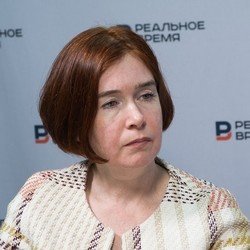There will be no 'Black August': ruble promises to withstand
The Fed and the coronavirus will put pressure on the ruble, the Central Bank and the elections will protect it
By tradition, by August, the population of Russia is wary of the behaviour of the national currency. For some reason, it is this month that the national currency most often collapses, the economy is reshaped, inflation gets a new round. Some superstitious investors prefer to wait out this wonderful time so as to avoid a “black swan” event. Since the beginning of this summer, the ruble has shown the best dynamics at MICEX tradings since the beginning of the year, strengthening to the level of 72 rubles against the dollar. Will its course change in the traditionally fatal August, and what can throw it out of balance at tradings? Analysts' consensus forecast for August is 73-75,1 rubles to the dollar.
Strong ruble held on for two summer months
This week, the Russian currency again broke through the mark below 73 rubles to the dollar and below 87 rubles to the euro, returning to the levels of the beginning of July. The main reason for the strengthening of the ruble was the decline in inflation to the levels of previous years for the third week in a row, according to bank analysts. In their opinion, the fact that real incomes of the population still remain below the level of 2019 played in favour of the strengthening of the ruble, the pace of retail trade turnover cannot recover to the pre-covid level. Against this background, some banking analysts expect the ruble to continue strengthening, which will be more pronounced against the euro than against the US currency.
“At the end of the year, we expect a rate of 72-73 to the dollar and 83-84 to the euro. If the euro to dollar exchange rate remains at the same levels, the ruble against the dollar may reach the range of 70-71. However, investors need to be prepared for the traditional increased volatility in the foreign exchange market associated with the onset of various unforeseen events," banking experts say.
On 7-9 August, 2021, the Central Bank lowered the official dollar exchange rate at the level of 73,1304 rubles, which is by 3,76 kopeks lower than the previous indicator. The official euro exchange rate was lowered by 19,08 kopeks to 86,4621 rubles.
However, the trend for the strengthening of the ruble may change sharply at the beginning of this week under the influence of the publication of a report on the US labour market. If it turns out to be strong, then the fall of the Russian currency may be more significant — in the range from 73 to 75 rubles.
Focus on American macrostatistics
Yegor Zhilnikov, the chief analyst of Promsvyazbank, suspects that if the ruble weakens, it will be as a result of the release of statistics in the United States:
“Next week, we expect the formation of a new trend for the ruble, as a result of which it may weaken. This dynamic will be determined by today's and subsequent US macro statistics, which global investors are guided by, trying to assess the Fed's further actions regarding monetary policy. The ruble may be supported by the end of the purchase of foreign currency by the Ministry of Finance on August 5 within the framework of the fiscal rule. In general, our target corridor remains in the range of 73,0-75,1, and next week we expect the ruble to fluctuate in the middle of our range against the background of correction in developed markets.
By the end of the month, we will base on macroeconomic indicators, but we predict two outcomes. In a good scenario, with the stability of world markets and rising oil prices, we expect the ruble to consolidate at the lower levels of the target border with its potential break (in this case, this will be one of the most positive August in terms of the ruble's dynamics). In a more realistic scenario, we are looking at reaching the middle of our range at the end of the month, at the end of the year — approaching the upper limit and possibly crossing it. According to our estimates, the fundamental value of the ruble at the end of the third quarter is 70 rubles, but the real value is approximately the upper middle of the range.
“If we see a rate of 72 rubles per dollar, it will be quite a good scenario”

“The trajectory of the national currency exchange rate will depend on what monetary policy the Fed will pursue. But thanks to the high key rate, the ruble's positions look protected, and most likely, the exchange rate will not fall below 74 rubles per dollar.
I don't expect a big strengthening, because there is still a fiscal rule that sterilises additional raw material revenues. I don't really believe that large foreign capitals can enter here. Although the interest rate is high, because the Central Bank has raised it significantly since the beginning of the year.
However, global markets are waiting for the Fed's decision to tighten financial policy. I think that against this background, foreign capital is unlikely to enter the securities of emerging markets in general, and Russia in particular. If we see a rate of 72 rubles per dollar, it will be quite a good scenario. A more significant strengthening does not seem very likely to me. But, in principle, I would not expect a weakening of the ruble.
The main trend that determines the exchange rate of the national currency not only for a month, but also until the end of the year is how the markets will assess the prospect of tightening monetary policy in the United States. This is the main factor that will determine the rhythm of all financial markets until the end of the year. I don't think that this will become clear in August, but I think that everyone will monitor this until the end of the year. This is paramount.
The Central Bank's interest rate will play the key role in the domestic market. Yesterday, there was news that the ministry of economic development proposes to increase budget expenditures for the next years. If the government agrees with such proposals, it will mean that inflation risks will increase, and the Central Bank will continue to raise the key rate. But for an investor, it is important how the interest rate develops. This will be the key internal factor.
“The risk for the ruble is the spread of the delta variant of coronavirus”
Mikhail Nikolaev, the director of ACRA Group of Sovereign Ratings and Macroeconomic Analysis, is optimistic:
“About a third of emerging market currencies are strengthening against the US dollar this year, and the ruble is among them. We expect this dynamic to continue. According to the ACRA forecast, the average value of the ruble against the US dollar is expected to reach 73,1 this year. Since the beginning of the year, it has amounted to 74,3, so we expect that in the absence of external negative events the strengthening will continue. The main factors that will contribute to this dynamic are soft monetary policy in developed countries and, on the contrary, tightening in developing countries, including in Russia. The increased oil prices will also support the ruble. The risk for the ruble is the spread of the delta variant of coronavirus, which can negatively affect the currencies of developing economies as a whole.

“In our opinion, in August, the USD/RUB exchange rate will be mainly in the range of 72-75 rubles per dollar. At the same time, in the absence of external shocks, we do not expect any serious drawdowns on the national currency.
Among the factors that will support the Russian currency, it is necessary, first of all, to highlight the line pursued by the Bank of Russia to tighten monetary policy. At the latest meeting, held on July 23, the Central Bank of Russia for the first time in seven years raised the key rate by 1 percentage point at once — to 6,5%. As a result, the real rate, calculated as the difference between the key rate and inflation, reached zero after a long stay in the negative zone, and this is favourable for the ruble. According to the forecast of the Bank of Russia, next year the average key rate will be 6-7% per annum, which means that the regulator does not exclude its further increase.
The hawkish rhetoric of the Fed may have a negative impact on the ruble exchange rate. As the vice chair of the Federal Reserve, Richard Clarida, said this week, all the conditions for an interest rate increase in the United States may develop by the end of 2022. Moreover, Clarida does not rule out that the regulator may announce the beginning of the completion of the quantitative easing programme this year. Very positive data on the US labour market also speak in favour of an earlier tightening of the Fed's monetary policy : the number of new jobs outside the agricultural sector increased by 943,000 in July, exceeding the consensus forecast of 870,000, and the unemployment rate fell by 0,5 percentage points to 5,4%, while analysts expected a result of 5,7%.
Besides, under the influence of the “dividend” factor, short-term drawdowns of the ruble exchange rate can be expected in August. For example, in August, Russian corporations will allocate about 670 billion rubles for the payment of dividends, of which about 160 billion rubles are accounted for by foreign shareholders and can be converted into foreign currency.
In conclusion, it is worth adding that on the threshold of the State Duma elections, it is hardly worth waiting for financial shocks.